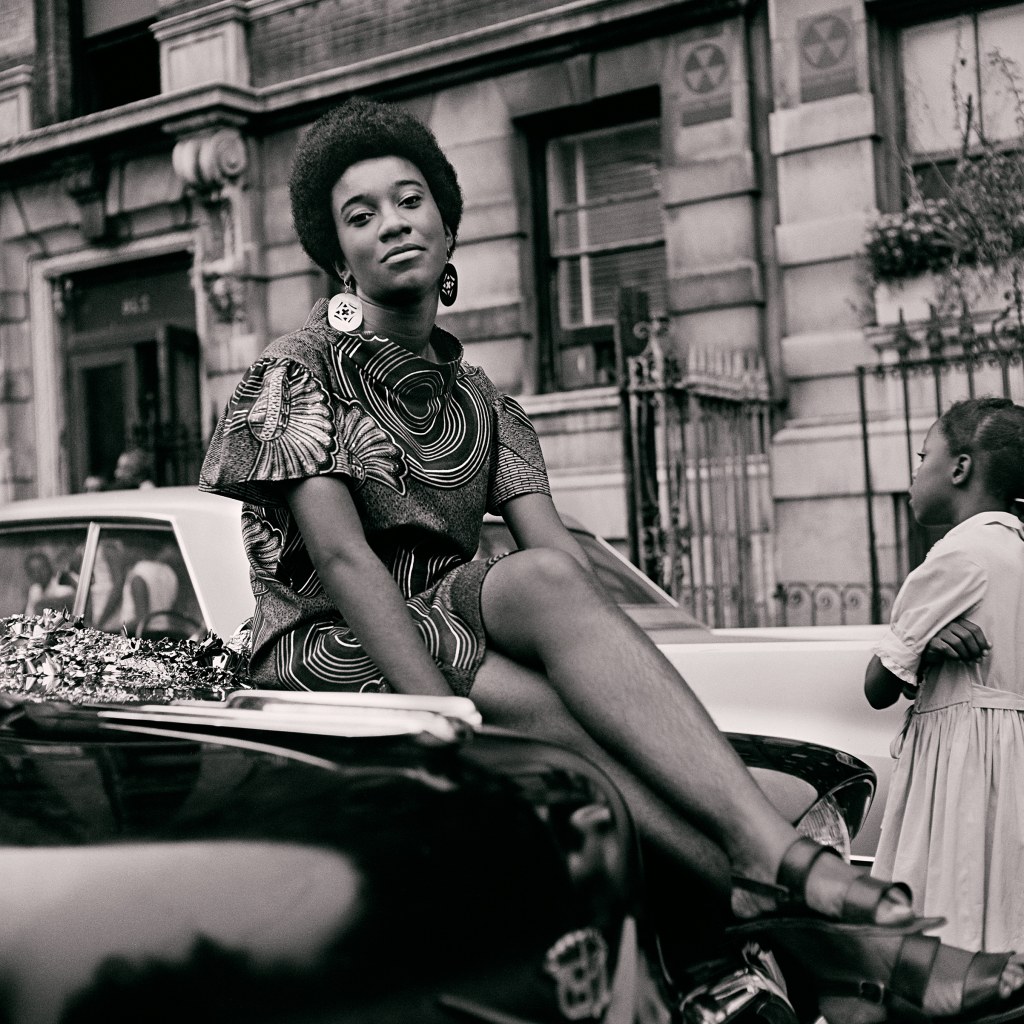Reviving The Timeless Elegance: Unveiling The Mesmerizing Black Fashion Trends Of The 60s
Black Fashion Trends in the 60s: A Look Back at Iconic Styles
Introduction
Hello, Readers! Today, we are going to take a trip down memory lane and explore the black fashion trends of the 60s. This era was a pivotal time in history, characterized by significant social and cultural changes. African Americans played a crucial role in shaping the fashion landscape, challenging norms, and expressing their unique styles. In this article, we will delve into the various elements that made black fashion trends in the 60s so iconic and influential. So, fasten your seatbelts and get ready for a nostalgic journey into the world of fashion!
2 Picture Gallery: Reviving The Timeless Elegance: Unveiling The Mesmerizing Black Fashion Trends Of The 60s


What: Defining Black Fashion Trends in the 60s
✨ The black fashion trends of the 60s encompassed a wide range of styles, reflecting the cultural, political, and artistic movements of the time. It was a period of self-expression and empowerment, as African Americans embraced their heritage and sought to redefine beauty standards.

Image Source: medium.com
✨ From the emergence of Afro hairstyles and vibrant colors to the popularity of African-inspired prints, the 60s saw a fusion of traditional African aesthetics with contemporary Western fashion.
✨ Key fashion icons like Diana Ross, Jimi Hendrix, and Pam Grier influenced the trends of the era, inspiring generations to come.
✨ Let’s dive into the details and explore the various aspects that defined black fashion trends in the 60s.
Afro Hairstyles: Embracing Natural Beauty

Image Source: time.com
✨ During the 60s, the natural hair movement gained momentum as African Americans embraced their natural textures and celebrated their unique beauty. The iconic Afro hairstyle became a symbol of pride, empowerment, and resistance against societal norms.
✨ Women and men alike flaunted their voluminous Afros, creating a visual statement of self-acceptance and cultural identity.
✨ Afro picks, headbands, and scarves were popular accessories that complemented the hairstyle and added a touch of individuality to the overall look.
Soulful Colors: Vibrant Hues and Prints
✨ The fashion scene in the 60s was defined by bold, vibrant colors and eye-catching prints. African-inspired patterns, such as Kente and Ankara, gained popularity as symbols of cultural pride.
✨ Colors like fiery reds, sunny yellows, and deep purples dominated the fashion landscape, adding a sense of energy and vitality to outfits.
✨ From psychedelic prints to geometric patterns, the 60s witnessed an explosion of creativity and experimentation in fashion.
Mod Fashion: Sleek Silhouettes and Mini Skirts
✨ The mod fashion movement of the 60s had a significant impact on the black fashion scene. Characterized by clean lines, bold geometric shapes, and short hemlines, mod fashion represented a departure from traditional styles.
✨ Women embraced mini skirts, shift dresses, and tailored suits, exuding confidence and breaking free from societal constraints.
✨ Accessories like go-go boots, statement sunglasses, and chunky jewelry completed the mod look, adding a touch of edginess and glamour.
Civil Rights Influence: Power Dressing and Symbolism
✨ The civil rights movement had a profound influence on black fashion in the 60s. Activists like Angela Davis and Malcolm X used fashion as a form of political expression and empowerment.
✨ Power dressing, characterized by tailored suits and strong silhouettes, became a symbol of resistance and strength.
✨ African-inspired accessories, such as dashikis and kufis, were worn as a statement of solidarity and cultural pride.
When: The Rise and Evolution of 60s Black Fashion
✨ The black fashion trends of the 60s emerged during a time of significant social and political change. This decade witnessed the height of the civil rights movement, the rise of the Black Power movement, and the birth of the Black is Beautiful movement.
✨ The fashion scene was heavily influenced by these movements, with African Americans using fashion as a means of self-expression and cultural identity.
✨ The 60s marked a shift towards a more inclusive and diverse fashion industry, as black designers and models began to gain recognition and challenge the prevailing Eurocentric beauty standards.
Who: Fashion Icons Who Defined the 60s
✨ The black fashion trends of the 60s were shaped by influential figures who pushed boundaries and redefined style norms. Let’s take a look at some of the iconic fashion icons of the era:
✨ Diana Ross: The lead singer of The Supremes, Diana Ross was known for her glamorous stage presence and impeccable sense of style. Her sophisticated ensembles and glamorous gowns influenced fashion trends of the 60s.
✨ Jimi Hendrix: The legendary musician Jimi Hendrix not only revolutionized rock music but also made a significant impact on fashion. With his flamboyant outfits, psychedelic prints, and iconic afro, Hendrix became a style icon of the era.
✨ Pam Grier: As one of the first prominent African American actresses in the 60s, Pam Grier embodied the essence of black beauty. Her fierce style, featuring bold colors, form-fitting outfits, and Afro hairstyles, inspired women everywhere.
Where: The Influence of Black Fashion Trends in the 60s
✨ The black fashion trends of the 60s had a global impact, influencing not only African Americans but also people from diverse cultures around the world.
✨ Major cities like New York, Chicago, and Detroit served as epicenters for black fashion, fostering creativity and innovation.
✨ The vibrant and dynamic styles of the 60s continue to inspire contemporary fashion designers, photographers, and stylists.
Why: The Significance and Legacy of 60s Black Fashion
✨ The black fashion trends of the 60s were more than just a fleeting trend. They represented a powerful movement of self-expression, cultural pride, and breaking free from societal constraints.
✨ By embracing their heritage and defying beauty standards, African Americans paved the way for greater representation and diversity in the fashion industry.
✨ The legacy of 60s black fashion lives on, serving as a reminder of the importance of inclusivity and celebrating the beauty of diverse cultures.
How: Embracing 60s Black Fashion Trends Today
✨ To incorporate elements of 60s black fashion into your modern wardrobe, you can:
✨ Experiment with Afro hairstyles, embracing your natural texture and celebrating your unique beauty.
✨ Add pops of vibrant colors and bold prints to your outfits, paying homage to the vibrant fashion scene of the 60s.
✨ Incorporate mod-inspired silhouettes and mini skirts for a fun and edgy look.
✨ Show your support for black fashion designers and models by seeking out and purchasing their creations.
✨ Above all, remember that fashion is a form of self-expression, and embracing your individual style is the ultimate way to honor the legacy of 60s black fashion.
Advantages and Disadvantages of 60s Black Fashion Trends
Advantages:
1. Empowerment: 60s black fashion trends empowered African Americans to express their cultural identity and challenge societal norms.
2. Representation: The fashion industry became more diverse and inclusive, celebrating the beauty of black culture.
3. Creativity and Innovation: The fusion of African aesthetics and Western fashion resulted in unique and groundbreaking styles.
Disadvantages:
1. Appropriation: Some elements of black fashion were often co-opted by mainstream culture without proper recognition or understanding of their cultural significance.
2. Stereotyping: Certain fashion trends were oversimplified and perpetuated stereotypes about black identity.
3. Limited Access: The fashion industry still faces challenges in providing equal opportunities for black designers and models.
Frequently Asked Questions (FAQs)
1. How did the civil rights movement influence black fashion in the 60s?
The civil rights movement sparked a sense of pride and empowerment among African Americans, leading to the emergence of fashion as a form of political expression. Power dressing and cultural symbolism became prominent aspects of black fashion in the 60s.
2. Who were some influential black fashion designers of the 60s?
Edith Head, Ann Lowe, and Stephen Burrows were among the influential black fashion designers of the 60s. They broke barriers and paved the way for greater representation in the fashion industry.
3. Are there any modern fashion trends influenced by 60s black fashion?
Absolutely! The Afro hairstyle, vibrant prints, and mod-inspired silhouettes continue to inspire contemporary fashion designers and can be seen on runways and in street style today.
4. How can I support black fashion designers and models?
Supporting black-owned fashion businesses, purchasing from black designers, and advocating for diversity and inclusivity in the industry are some ways to show support.
5. What lessons can we learn from 60s black fashion trends?
60s black fashion trends teach us the importance of embracing diversity, celebrating cultural heritage, and challenging societal norms. They remind us that fashion can be a powerful tool for self-expression and social change.
Conclusion
In conclusion, the black fashion trends of the 60s left an indelible mark on the industry and society as a whole. From empowering hairstyles to vibrant colors and empowering silhouettes, these trends celebrated African American culture and challenged beauty standards. While there were both advantages and disadvantages associated with these trends, it is undeniable that they played a crucial role in shaping the fashion landscape and inspiring generations to come. Today, we can honor the legacy of 60s black fashion by embracing diversity, supporting black designers, and celebrating the beauty of cultural heritage.
Final Remarks
As we reflect on the black fashion trends of the 60s, it is important to acknowledge the ongoing fight for equality and representation in the fashion industry. While progress has been made, there is still work to be done. By supporting diverse voices and advocating for inclusivity, we can contribute to a future where black fashion trends are not just celebrated but fully integrated into the fabric of the industry. Let us remember the importance of embracing our unique styles, just as the fashion icons of the 60s did, and continue to push for a more inclusive and diverse fashion landscape. Together, we can make a difference.
This post topic: Fashion Trends


